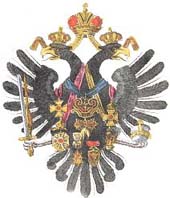
AUSTRO-HUNGARIAN
MANNLICHER M95
by
RK Smith with additions by Cliff Carlisle
Ferdinand Ritter
von Mannlicher was born in Austria and was a mechanical genius, giving
to the world over 150 different weapon designs. There are Austrian,
Belgian, Dutch, French, German, Italian and Serbian Rifles that used his
Mannlicher clip as well as the Garand made by the USA and several other
countries. Many of the designs that are found on todays rifles we
owe to Mannlicher. Mannlicher died in 1903 leaving behind a legacy
that maybe only Browning can compete with.
The Steyr Model
1895 is the result of several design changes. The first design straight
pull bolt was in 1884, the M84, with gravity fed magazine, designed by
Mannlicher. The first improvement was in 1885 with the addition of a clip
fed magazine in which the clip was ejected from the top when empty.
In 1896 the enbloc Mannlicher magazine holding five rounds was added to
the gun and it was designated the M86. Two years later, 1888, it
was changed from the original 11mm to the 8X50R which was black powder
charged. In 1890 it was changed, M1888/90, to smokeless powder, with
an altered sight to compensate for the difference in trajectory.
Later that year a new design was introduced to better handle the increased
pressures of the round. This design was known as the Repetier-
Carabiner
M90
and had the locking lugs
at the forward end of the bolt where they would give more support to the
head of the cartridge. The M90 is
39.5 inches long with a barrel length of 19.5 inches. The weight
is 7 lbs.. 2 ounces. The stock has no hand guard and is held
by one barrel band at the forend. The final design was the Repetier
Gerwehr M95, which only had minor modifications, but is considered
to be very strong. The M95 was manufactured in three configurations:
The 50" infantry rifle; The 40 inch 7 lb 14 oz short rifle( Repetier
Stutzen- stutzen means support in German) to be used by the signal, artillery,
and engineers, with stacking hook, bayonet lug and the sling swivels on
the bottom of the stock. The 39.5 inch, 7 lb 2 oz cavalry carbine,
without stacking hook, and bayonet lug, with sling swivels on the left
side of the stock, to be carried in a saddle boot. The front
sling swivel, on the carbine is located 2 1/8 inches further back on the
stock than on the Stutzen. The M95 was first manufactured at the Steyr
plant, marked STEYR M95 and then in Budapest at an arsenal set up on an
island by Steyr, marked with BUDAPEST M95. These two plants also
manufactured the M95 for Bulgaria, marked with the Bulgarian Lion Crest.
At the closing of WWI the Imperial Austro-Hungarian Empire collapsed and
the armaments were dispersed as war reparations to Greece, Italy, Hungary,
Bulgaria and Yugoslavia. Greece, Bulgaria, and Yugoslavia reworked
the M95's and rebarreled them in 7.92 Mauser. They also altered the
magazine to accept the German stripper clips. Bulgaria and Greece
designated their rifle the M95/24, Yugoslavia
designated theirs by adding an M for Mauser(M95M).
These short rifles had a 23 inch barrel, a Mauser tangent rear sight and
a mauser front sight. Rifle stocks were shortened to accommodate
the shorter barrel, although I have seen two with carbine stocks used.
The M95/24 was converted in Belgium for Greece and Bulgaria while
the M95M was converted in Serbia to match their FN 24's along about 1928
when their factory for M24's was being built. Other arms were also
converted including the Carcano the MN91 and a couple of the Enfield models.
After WWI an arms plant was set up
in an old Imperial Army Arsenal in Brno Czechoslovakia, and by April, 1919
they were making M95's marked CS. ST. ZBROJOVKA BRNO.
These M95's appear to be the rarest of the four manufactured. The Italian
M95 was issued in the Italian Colonies to some Colonial native auxiliaries.
Photo
November 1935 in Eithiopia during invasion shows a Dubat ( a Somali tribesman
member of an Italian Somailand border force of irregular guards being used
as scouts, flank security to march columns, battlefield pursuit and clean-up.
He is carrying an M95 in 8X50 as Italy did not change the caliber of their
guns.
In 1930 the Austrian
government updated most of their rifles, stutzens and carbines. They
were re-chambered for the more powerful 8X56R cartridge & the sights
were changed from the old “schritten” measurement (one schritt = 0.75 meter
or 29.5 inches) to the metric one and a front sight hood was installed.

M95/30 Stutzenkarabiner.
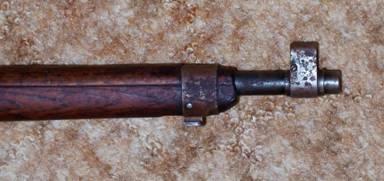

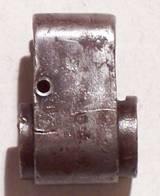
Front sight without
the hood. Note that it is considerably higher than the original schritten
one. Also shown is the hood with the Austrian Eagle marking.
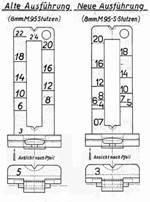
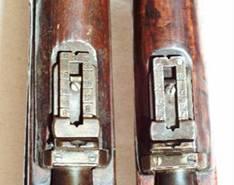
Schritten rear sight
on the left & the new metric sight on the right. From an Austrian
manual and examples of the guns.
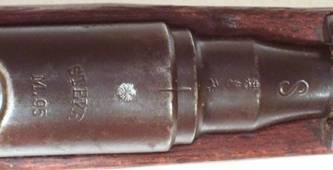
The receivers and
sight hoods were stamped with the Eagle stamp for the Republik Austria
which was used from 1918 until March 1938 when the Germans took over the
control of Austria. The barrels were stamped with an HV (Heeresverwaltung
= army administration) control stamp where the right leg of the H is the
left leg of the V, the Austrian republic eagle and the date of the conversion.
This one is stamped HV eagle 34 for 1934.
They marked the
updated ones with an S on the barrel and designated them the M95/30 or
M95 S for Stutzenkarabiner. The barrels were originally marked Wn,
Imperial Eagle and the date of manufacture. During the upgrade some
of the dates were over stamped and some were left intact with the HV stamp
alongside the original one.
After the Germans
took control of Austria in 1938 they re-called all the M95s & replaced
them with German rifles. The M95/30s were processed through a repair
shop & the sights were changed back to the schritten type and the front
sight protectors were removed. These guns were then given to the
Bulgarians, one of Germany's allies, who still used the M95 with the schritten
sights. An un-converted M95/30 is a rare gun.
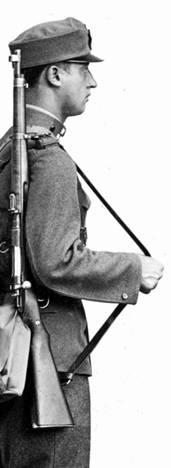
An Austrian Federal
Army (Bundesheer) soldier with one of the M95/30 Stutzenkarabiners.
In 1931 Hungary
also re-chambered their Stutzens to 8X56R and installed a front sight hood.
The hood, however, is different than the Austrian one. They stamped
the barrel with an H to signify the caliber change. Hungary designated
the converted rifle the Huzagol 31M.
There are many other
variations including the 95/34 (although this is not an official designation)that
has a sling loop on the left side of the forearm instead of the sling swivel
and an Austrian Police version with an aluminum butt plate from the 50's.
Another variation is the Stutzen Navy model with sling attachments on both
the bottom and left side.
The M95 saw use
in two World Wars and many other small wars. M95 carbines were issued
to the Russian Navy as the standard arm, but I do not know if they were
marked in any way. It was basically retired in the 50's and has been
showing up in the USA for the past few years as a collectors item.
The M95's coming out of Century Arms at this time all have stacking hooks
while some of them have stocks that belong on a Stutzen, some of them have
carbine stocks. All of the guns I have obtained are 40 inches overall
(Stutzen length) with one or the other stock, indicating to me that the
use for a cavalry carbine had dwindled to nothing with the advent of the
mechanized army and the use for a bayonet on a short rifle for the infantry
had increased. There is additional information pertaining to the
M95, as it relates to the individual countries discussed, on our various
rifle history pages.
Mannlicher was a
very prolific designer and has several other Carbines to his credit which
I will cover at a later date on another page. Check the Serb Yugo
page for additional information on the M95's